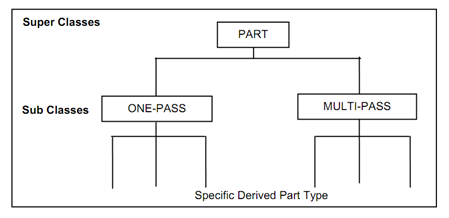Generic Cell Control Class Architecture
The initial step in designing the system is the development of classes. All classes are assigned responsibilities for specific tasks needed for the problem solution. After the classes are designed, relationship among classes is identified.
The design development is contingent on objects and their responsibilities in the system quite than being built around inflexible predetermined data structures. These methods of organization make sure the object-oriented viewpoint of data abstraction and hiding.
For the demonstration of the hierarchical design of classes the subsequent illustration is considered.
Example .1
For cell control architecture, several super classes are may be as like: Manager, Communicator, Part, Facilitator, supervisor and so no. The subsequent figure shows a typical cell control class hierarchy.

Figure: A Cell Control Class Hierarchy
Likewise, other classes may be formed from most usual super class in more exact subclasses or derived classes.
The functioning of the system is based upon the interactions amongst the objects. Conversely virtually, these objects are separated into compiled, distinct and performed modules, in multi-tasking environment, in sequence for simultaneous execution.